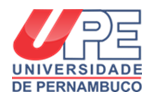-
Aluno: Luis Obdulio Aguilar Loo
-
Título: “Co-Evolutionary Algorithm for Interoceanic Shipping - A Logistic Tool for Central America Transoceanic Trading”
-
Orientador: Prof. Fernando Buarque de Lima Neto
-
Data-hora: 26/agosto/2017 (08:30h)
-
Local: Escola Politécnica de Pernambuco – Auditório
Resumo:
"The Panama Canal, one of the major engineering work in human history, is a waterway linking the Atlantic and The Pacific Oceans, which has facilitated maritime navigation for over 100 years, as it functions as a "shortcut" between both oceans. Prior to the existence of the Canal, ships had to sail to the Strait of Magellan, in Chile, to cross the American continent. With the opening of the Canal, crossing times were reduced from approximately 20 days down to only 10 hours. Currently, more than 5% of all global cargo passes through the Panama Canal. However, due to the high demand of vessels trying to cross the Canal, by 2016, the average of waiting time was 11.79 hours, or 32.68 hours including awaiting time in ocean waters. To improve this situation, extensions were built and the latest inaugurated in June 2016, which doubled the installed capacity of the Canal. However, it is expected that the same levels of delay-time will be reached again within a period of 20 years. In Mexico and Central America there has been interest in offering alternatives to the Panama Canal, through projects referred as “Dry Canals”, which are high-speed highways connecting cargo ports located in both oceans. Honduras has made the biggest progress through a national plan called "Honduras 2020" with which it expects to see concluded the logistic corridor that connects the ports of San Lorenzo and Puerto Cortés, located in the Pacific and Atlantic oceans respectively, by the end of 2017. Through the Dry Canal, cargo can be transported from one port to another in just 7 hours, but not considering the transshipment times. This research put forward a logistical tool that identifies the possible scenarios in which Honduras, through the Dry Canal, can become a collaborative and viable alternative to the Panama Canal for the transport of interoceanic cargoes. The conceived tool uses a coevolutionary algorithm, with a collaborative approach among several entities, considering time variables, costs and assigning performance indicators (KPIs) to the solutions found by the algorithm so that decision makers, at the operational level, can redesign the routes and scheduling of cargo ships. The solutions obtained by the logistic tool show improvements in the KPIs due to the re-location of ships to alternative ports. With this redesign of the original route, the ships streamline the process, the Panama Canal decreases average times of waiting and Honduras increases the provision of port services."


